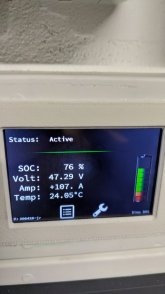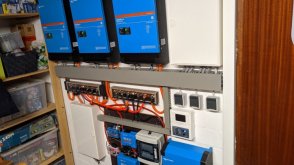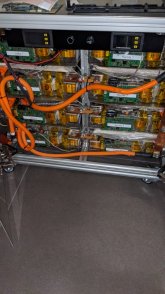SG-1
New Member
I do not need your approval, or your support. I know what my plan is and how it's going to work. Sure TESLA power walls are NOT a worthwile investment, but for minimum 8k and not having to put 10kWh system on your roof just so the power company can give back 2-3 cents per kWh while still charging you maximum prices during peak times when you really need it. Live in your dream world I will look at reality and hope our children will have a world to inherit once people like yourself destroy it.If you are happy and content with that, that's all that counts.
Not having a go at you but I think the whole " No power bills" Idea is way overblown... Much like the EV proponents carry on abut not having to do oil changes like they need to be done every day and cost $500 a pop. If you can't afford 4 oil changes a year, sell the damn car and walk!
What I see in various places is people akin to people boasting they never have to pay for fuel at a petrol station because theybare running their car on Chanell No. 5. If the overall cost is greater, whats the freaking point?
My last power bill was $1.47 per day. That is grid connection charges and power I used. I have no batteries but a heap of panels.
I cannot make my own power independently for that. If I costed out all the equipment I'd have to buy and amortized the cost of the batteries, inverters, controllers wiring and components over their life and the ongoing costs of replacement when things failed, would not work out by a long shot.
You battery cost alone is nearly $1.20 a day over 10 years and you had to pay that up front lump sum. If you didn't pay cash, it cost you more. If you did there is lost interest or investment returns.
I think the idea of no power bills is the wrong and a rather naieve attitude.
The thing I look at is how do I get the power I need at the lowest possible Cost?
Not having a power bill to me is pointless if I'm paying more for power than I could otherwise. The object of the game to me is make my power cost as low as it can be. ATM, for me that's stay on the grid. That may change, even in the next 12 Months but the goal will still remain the same.
Others may have other goals and thats fine but if its not lowest cost power, they should not push that as a justification.
The other thing I hear a lot and equally do not understand is people spending large amounts of money on battery / solar systems for blackout protection. Often these outages are infrequent and short when they do happen. Spending thousands as is often the case for a dozen hours a year if that of outages when someone could just go buy a generator for a few hundred bucks and probably spend $10 on fuel also makes no sense to me and I put it down to just another internet mentality in a lot of cases. People doing what everyone else does because the want the approval and acceptance of others and to be accepted into the heard.
If people want to be independent, thats another thing but it's different to " No power bills" . I can be independent at a moments notice. Fire up the gennys and I can run for a week without leaving the place. If I needed to go longer I could with preparation ( store more oil) but I think the sum total of outages here in the last 3.5 Years I have been in this place have been about 8 Hours and that was mainly one incident. At my old house I think I had about 8 hours outage in about 20 Years. Most annoying as I never got to justify my toys to the Mrs near enough.
I am quite well off at this stage of life ( which probably means something bad will happen) but I had the arse out my pants for a long time and while I am a tight arse, I also don't see the point of spending more money than one has to for something unexciting and fundamental like Power. Maybe a dream holiday or get the Bike or car you want and will give you a lot of pleasure and ongoing enjoyment as well as have resale/ investment value, different thing but boring arse electricity?
It's clear to anyone not trying to fool themselves that a LOT of people here and elsewhere are completely kidding themselves thinking they are saving money with their panel and battery setups. It's pure and utter fantasy to think they are saving money. If they want to do it as a hobby, Fine, just admit that and don't try and say there is a benifit which there plainly is not. It is extremely difficult to go off grid cheaper than you can stay on grid if it is available. Even trying to save money on grid costs becomes a very difficult thing once batteries get involved.
Most people with that say ooh, look, I halved my power bill but ignore the money they already spent doing it which in the majority of cases they will never get back and their total power costsvare HIGHER than what they were without all the stuffing round.
I'm just glad these people aee not running my business, I'd be broke years ago.
With solar only, both my and my fathers power costs are far more for grid connection than the power we use. Panels have a hugely better payback on their own with grid tie than batteries do much as some find that fact not something they want to hear let alone admit.
That said, If it gives a person contentment and keeps them out of whore houses and gives them something to do other than shoot up, then their money, fair enough, we all need to fill in our spare time.
I think in general, these ideals that are in most cases flawed in the agenda they purport as their purpose and benifit, are well over extolled and pushed as a justification way too much.
In saying that this thread was all about someone asking about there now dead Tesla Battery, so get back on topic . . .






